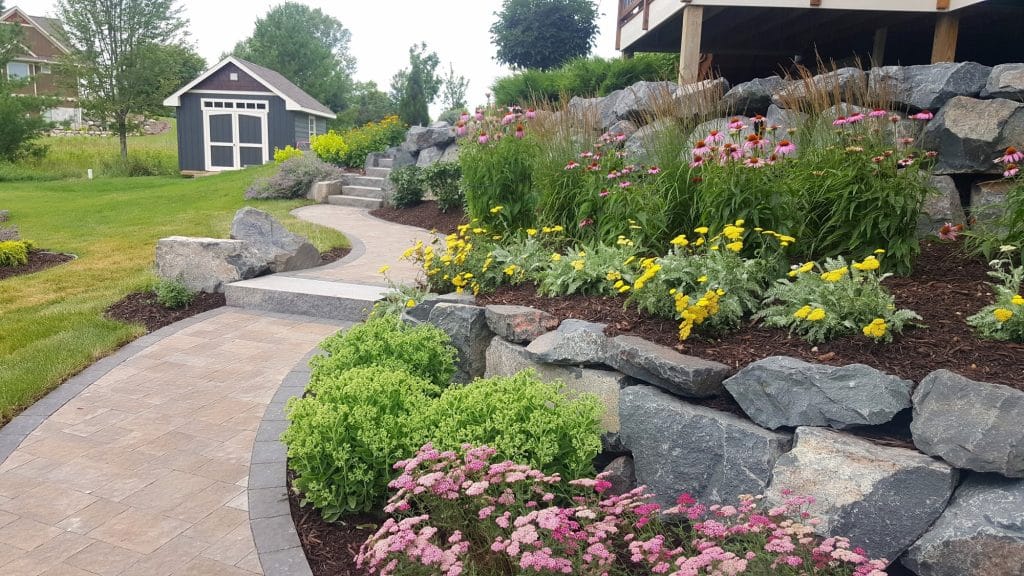Many homes and businesses throughout the Twin Cities find their properties with sloped, uneven or hill-like surfaces. These hillside hideaways hinder the useability and functionality, but it doesn’t have to stop your landscaping dreams from becoming a reality.
When planning hillside landscaping, there are several important factors to consider to ensure a thriving and sustainable design.
How To Make My Hillside Landscaping Last?
Maximize Space | Retaining walls or terraces are great options to assist in increasing the usable space available to you. They can also add texture, depth and many other benefits to your sloped property.
Water Drainage | When you live on or near a hill, it is vital to know where your water is draining. Proper water drainage not only decreases the risk of soil erosion or your basement flooding but also helps keep water from accumulating on your property. Adding in French drains, underground drainage systems or even directing the water through our innovative landscape design can save you thousands in the long run!
Plant Selection | Choosing plants that are well-suited to hillside landscaping is key in ensuring your lawn and gardens don’t slide away from you. Native plants or those with deep root systems can anchor the soil and reduce the risk of erosion or landslides.
Accessibility | Even the most beautifully designed hillside landscape must be accessible for watering, pruning, weeding and use by you. Designing pathways, stairs or terraces offer safe and convenient access to different areas of your hillside while minimizing soil and plant disruption.
Safety | Safety is paramount when designing, installing and using a hillside landscaping surface. If the slope is too steep or unstable, proper foundational work is needed to ensure the space is functional and secure. We always recommend talking to a professional before any work is done to know the hidden dangers your sloped landscape may hide.

